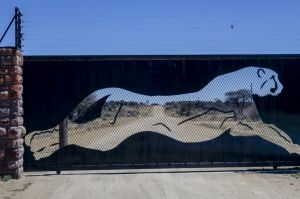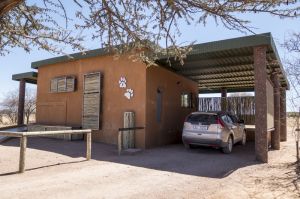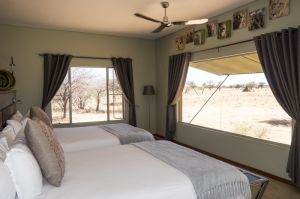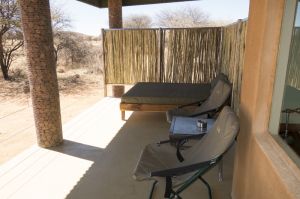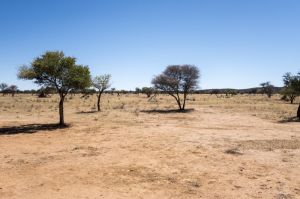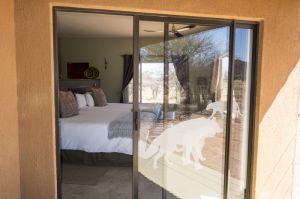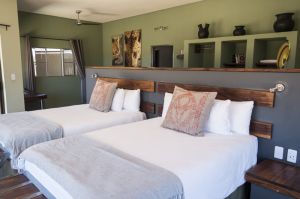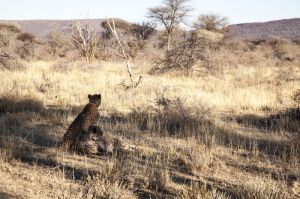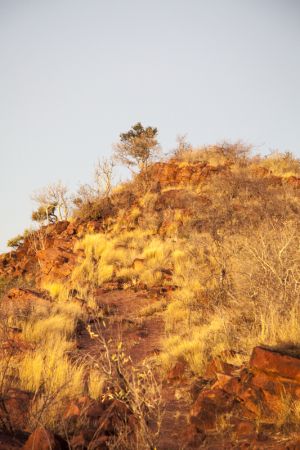Home for the next two nights is Okonjima Plains Camp, home of the AfriCat Foundation. Let me start by saying that I’m fully supportive of AfriCat’s mission to conserve the big cat species of Africa. The accommodation is fine, but it is the first place I’ve been to on this trip that I wanted to leave before the first night.
The Okonjima Plains Camp is relatively new. It has a lovely restaurant area and lounge area called The Barn. It has the worst food you’ll probably encounter in Namibia, and some very poor activities. I’m not a foodie – I’ll happily subsist on cheese and crackers for a month. The restaurant seats 60 people, and the kitchen is clearly overwhelmed by anything other than breakfast and afternoon tea. I’m lucky I like my beef medium rare, and will tolerate it marginally more cooked than ‘raw’, because I didn’t get any say in the matter for the first dinner. Lunch the next day was worse – cold schnitzel of indeterminate origin, slathered in a white sauce, accompanied by a green salad slathered in dressing. Neither condiment made either more edible. There is no alternative to the food on offer (the nearest town is 60km away), and no choice on the menu. The hospitality area of the lodge needs an organisation accustomed to providing meal service to come in and show them how it’s done.The ‘safaris’ in the reserve are also problematic. Some of the safari vehicles have been fitted to have TWELVE seats, and extra row above the usual 9. This means that if you’re stuck in the first row as I was for two drives, there is nowhere to put your feet if you’re tall with long legs. Bruised shins does not make for a happy camper.
All of the cats that have been released into the reserve (leopards and cheetahs) wear tracking collars, which allow the staff to keep tabs on them, and also to alert them to a dead or injured animal. The safaris utilise radio receivers to find the animals, which results in an often comical situation of the guide/driver holding an antenna above his head to find the animals. I did four activities at Okonjima and never saw anyone check the tracks in the road at all. The cheetahs were easy to find on foot – predictably resting in the shaded area of a small clearing.

